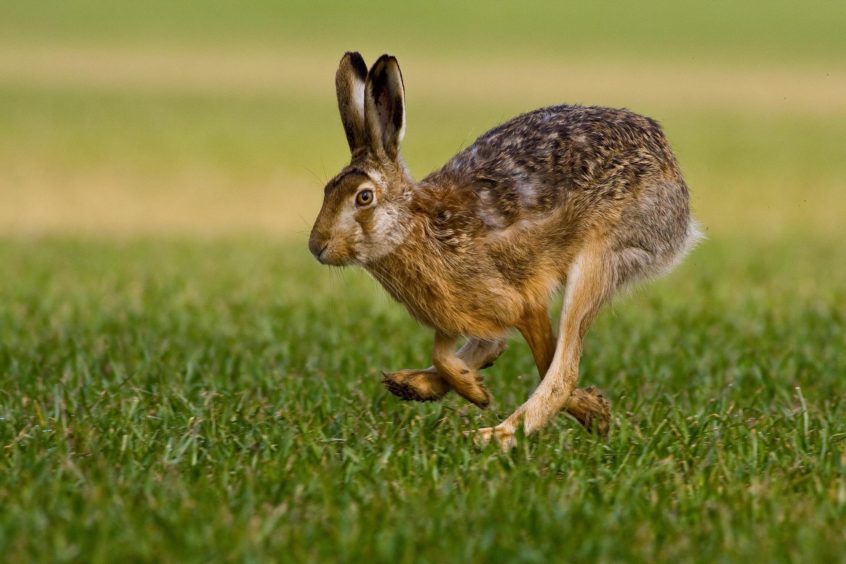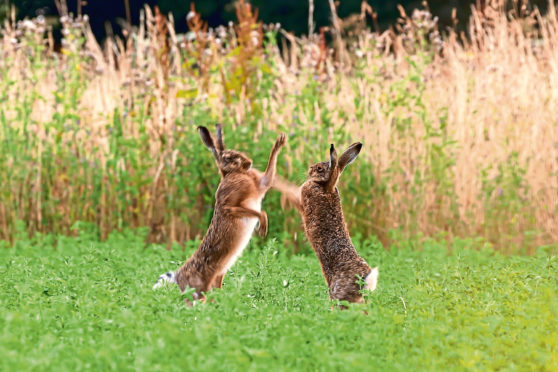On misty frost-laden mornings along the rolling pastures of Deeside and in the pancake flat fields of Buchan a strange ritual is now being enacted.
A group of brown hares has gathered in the middle of a pasture, eying each other up, looking and waiting.
Then one bounds up to the other and they both rear up on their hind legs, their front paws flail frantically in a boxing match, before one gives way and retreats ready for the next bout. These are the so-called ‘mad March hares’.
The reasons for these boxing matches have only recently come to light. At one time it was thought they involved two males fighting for a mate, but research has shown that it is normally a female hare fending off the advances of an over-amorous suitor because she is not yet receptive to breed.
But such confrontations are even more complex than that, and males will often square up to each other as well, but rather than boxing, such encounters usually involve chasing. Chases involving several hares may also involve males pursuing a single female.

In other words, it is all a bit of a stramash, with each male hare in the group seemingly intent on having a go at his nearest neighbour whenever the fancy takes him. With some males weighing in at three-and-a-half kilos, these are animals that pack one almighty punch. Dominant males are responsible for the most matings.
The term ‘mad March hare’ is something of a misnomer, given that the breeding season is not confined to spring and the sparring matches will continue well into the summer, although the thickening ground cover by then means that such encounters are not so easily witnessed. The hare is a shy animal and largely nocturnal, which means the best chance of witnessing their courting rituals is in the early morning or just before sunset.
Although numbers have declined in recent decades, brown hares are still relatively frequent in north-east Scotland. As well as Deeside and Buchan, look out for them in the fields of the Mearns and along the Moray coast and up into Easter Ross. They also occur on Skye.
A good way of detecting a hare is to scan a likely field with a pair of binoculars, for the animal has the habit of crouching against the ground or on grass or in a ploughed furrow. What from a distance looked like a small brown boulder, will miraculously turn into a resting hare.
Introduced into this country by the Romans, and with a turn of acceleration that can take them up to 45mph, the brown hare is undoubtedly one of our more intriguing wild creatures. But is he mad? Well, at this time of year the answer is probably yes – that insane surge of hormones pulsing through his body making him crazy in love.
Info
Brown hares produce up to three litters a year, comprising of one to four leverets (baby hares). The young are born furred and with open eyes.










